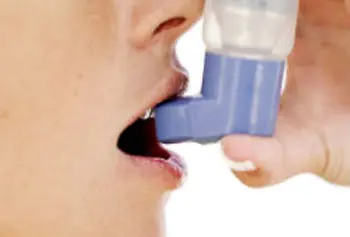Environmental Justice Focus Extends from Homes and Workplaces to Landfills
 Image by Emily Ray
Image by Emily Ray
12/03/2018
By Katharine Webster
David Turcotte, a research professor in the Economics Department, is best known for his Healthy Homes research on asthma, which has improved the lives of hundreds of low-income children and seniors in Lowell for almost 20 years.
Asthma rates are growing, according to the Asthma and Allergy Foundation of America. The disease now affects one in 12 children and is the leading cause of missed school days. Asthma also costs the U.S. economy about $81.9 billion in medical costs, mortality and missed work and school days each year, according to the foundation. While there is no cure, asthma symptoms can be managed medically and, as Turcotte’s research demonstrates, environmentally.
Turcotte’s broad background in sociology, politics, technology, community economic development, immigrant and refugee leadership, healthy workplaces and environmental sustainability has also led to his involvement in a wide range of other research projects, from community health assessments to the life cycle of wind turbine blades.
Turcotte directs the Peace and Conflict Studies program. As senior program director and researcher at the university’s Center for Community Research and Engagement, he also mentors graduate students in the Global Studies and Public Health programs. He is currently serving as principal investigator of The New England Consortium, which trains workers for disaster preparedness and hazardous waste cleanup.
Recently, he sat down to discuss the long-term impact of his asthma research and some of his other projects.
Q: What have you learned from two decades of asthma research on children?
A: We’ve learned that our comprehensive approach to asthma education and intervention leads to significant improvements in children’s health, including fewer symptoms and reduced doctor and ER visits and hospital stays for severe asthma attacks. Both the children and their families see improvements in their emotional health and social activity levels, as well.
Maybe the most surprising thing we've learned is that low-income children in public and subsidized housing have fewer asthma-related health problems than those in market-rate apartments. That could be because families in public housing spend less of their income on housing, which means they have less financial stress and more money to spend on other necessities, such as healthy food and warm clothing.
Q: What’s involved in your comprehensive approach?
A: We go into a home with a community health worker from the Lowell Community Health Center and do a thorough evaluation for asthma triggers, including pet dander, excess dust, mold, dust mites and pests such as mice and cockroaches.
Over several follow-up visits, we teach the residents about environmentally friendly cleaning methods and the hazards of tobacco smoke, aerosol sprays, plug-in “air fresheners,” incense and scented candles. We also educate residents, housing managers and even the pest control companies about integrated pest management, which minimizes the use of toxic chemicals that can contribute to asthma.
But the low-income families we work with can’t afford some of the tools they need to control asthma triggers. So a large share of each grant goes to providing vacuum cleaners with HEPA filters, mattress and pillow protectors and less toxic cleaning products.
 Image by Meghan Moore
Image by Meghan Moore
Q: You and the Massachusetts Department of Public Health (DPH) just won another large grant – $1 million from the U.S. Department of Housing and Urban Development (HUD). What does this grant involve?
A: Two years ago, we won a DPH grant to bring our asthma education and interventions to low-income, elderly patients of Lowell Community Health Center. In addition, a visiting nurse came twice to review each senior’s medications and finalize an asthma care plan, as well as to better integrate the home visit with clinical care. The seniors didn’t improve as dramatically as children, but they did have fewer symptoms, fewer doctor visits and better social-emotional health.
That grant was for seniors age 62 and older; this new grant is for low-income adult patients ages 50 and older. There are a lot of people in their 50s with asthma now, and they shouldn’t have to wait until they turn 62 to get assistance. From a research point of view, we can also compare whether earlier intervention for middle-aged adults leads to better health outcomes than education and remediation for seniors.
Q: What’s the most challenging aspect of your research?
A: Maintaining improvements in symptom control is challenging, and we’re still trying to figure out how to do that. Most asthma research evaluates improvements over a single year. We won a grant from HUD recently to do a three-year follow-up study.
In the first phase, involving seniors, we found that the beneficial effects of the interventions declined over time. That’s not entirely surprising, since many seniors have multiple health problems.
Now we’re embarking on the second phase, and that’s proving challenging for another reason: Many of the low-income families with children have moved out of Lowell, and we can’t track them down.
Q: What other research are you engaged in?
A: Every three years, I lead an assessment of community health needs in Lowell and the surrounding towns on behalf of Lowell General Hospital. The information we gather is used by the hospital and community nonprofits to improve and prioritize their services.
I also recently completed a project on the life cycle and disposal of wind turbines as co-principal investigator on a National Science Foundation grant led by Prof. Christopher Niezrecki, chairman of mechanical engineering and director of the Center for Wind Energy. The dirty secret of wind energy is that the turbine blades used for ocean wind farms are up to 100 meters long, they’re made of a petroleum-based material, and they’re not recyclable. We looked at the feasibility of manufacturing the blades with sustainable materials, as well as possible ways to recycle and re-form the current material.




